[responsivevoice_button]
With balanced circuit design incorporating high-end components and a range of flexible facilities including adjustable gain, the ZEN CAN Signature is a transcendent headphone amp at a down-to-earth price. Made with high-end circuit design and components taken out of the iFi’s Pro range—including the Pro iCAN’s Class A output stage—this compact amp can drive 15V / 750mW into 300 ohms with less than 0.0066% distortion, ideal for the 6XX.
The specs of both the ZEN DAC and ZEN CAN Signature, as well as on the connections options can be found on their DROP Pages linked elsewhere in this article.
iFi Signature Series vs Sennheiser
iFi has specifically developed the ZEN AMP Signature series for Sennheiser headphones, and especially the HD650 and HD6XX from DROP. Here’s the full overview as iFi audio sees the synergy:
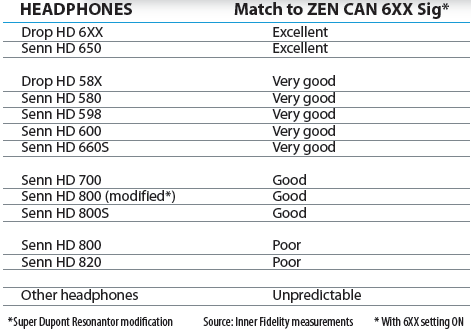
Now this of course doesn’t mean you can only use it with Sennheiser headphones. You can use the ZEN AMP Signature with any of your favorite headphones, but the special EQ setting (which was developed for Sennheiser) might or might not work well for your non-Sennheiser headphones.
So what exactly is that Sennheiser EQ Setting. The graph shows it all:
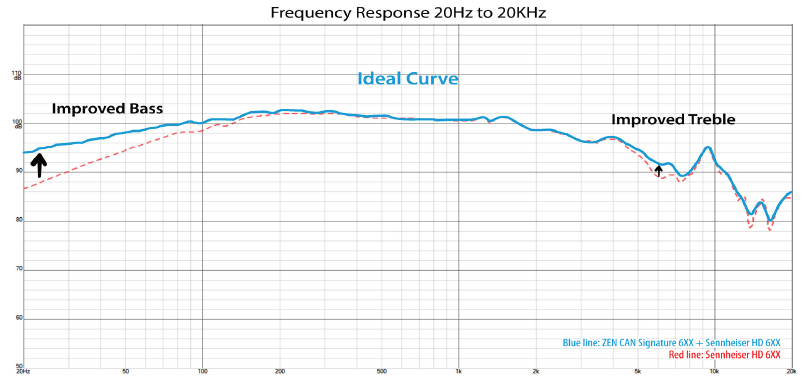
As you can see above there is an elevation in the lower regions and almost no change in the midrange. The top end shows a less peaky performance, though we should really say the dips have been minimized. All-in-all not a huge change except for the lower end but we’ll get back to that later.
I myself have tried the ZEN Signature combo with several different brands and I was very pleased with the result. The EQ Setting for some worked well and for others it didn’t, but in the end it’s personal preference.
Time to see how the Signature series sound!
iFi ZEN DAC Signature sound impression
I haven’t had the pleasure yet to listen to the original ZEN DAC, which we reviewed a couple of weeks ago, but I’m am very pleased with what I am hearing from the Signature unit.
I hooked it up to the high end Auris Audio Headonia amplifier with my ROON laptop as source and the HD800 headphone. There is LED hidden behind the volume control which changes color depending on the quality of file used. Of course MQA gets the typical purple, it’s a nice touch.
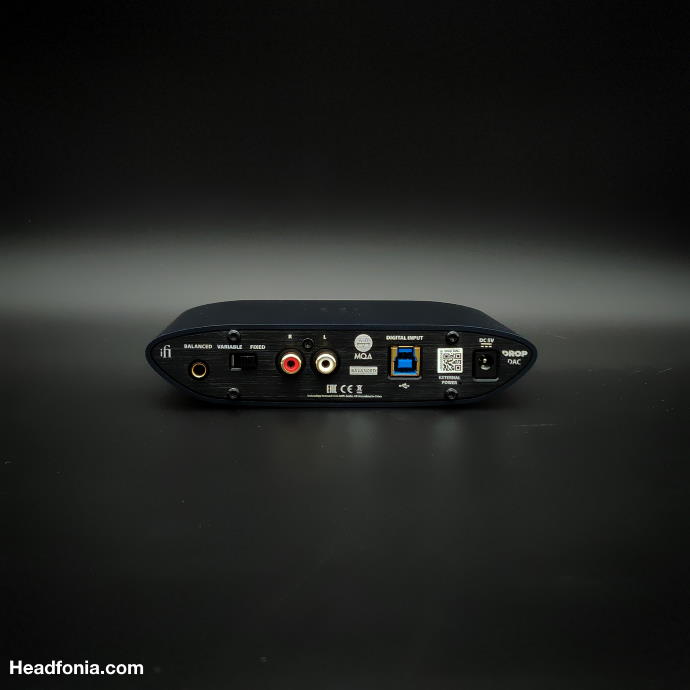
ifi audio zen dac Signature
The performance from the ZEN Signature was good. A very clean, fast and fairly detailed sound with no emphasis on anything in particular. Clean, neutral, transparent and linear, that’s how I would describe the ZEN Signature’s sound. Berkhan has said it already for the regular version and I’ll say it again for the more expensive ZEN Signature: looking at the price and the sound quality, the ZEN DACs impress. Even though the Signature version is more expensive, it still is very affordable and the price/quality ratio is high.
Can the ZEN Signature DAC compete with (my) higher-end DACs, no it can’t but at the same time it outperforms several other DACs in its price class. It’s a complicated and huge market though, and there’s always something better available around the same price. And if there isn’t yet, there will be in a few weeks’ time.
iFi ZEN CAN Signature sound impression
For this first article I hooked up the ZEN CAN Signature to the Flux Lab Acoustic Atlas DAC and used several of Sennheiser’s headphones.
The ZEN CAN Signatures offers 4 gain modes, but even with the 300Ohm HD800 I absolutely never needed any gain. Of course this depends on your DAC output, but I doubt many will be using the gain setting. At the same time it’s a nice to have option just in case.
For these first impressions we will look at the ZEN CAN Signature’s performance with and without the SENN EQ function and the 3D-setting.
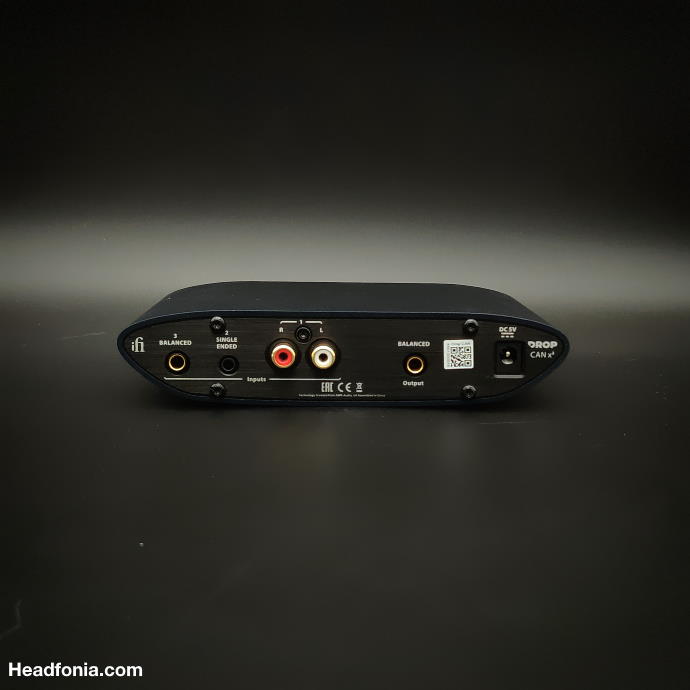
ifi audio zen dac Signature
First off the 3D setting. What this basically does imo is add a bit of cross feed to the signal so you hear a more spacious and open sound. The goal is to present a wider sound stage and make your music sound more realistic like with a live performance, and not like a headphone’s more direct presentation. If you like this kind of rendering then you for sure will like the effect the setting has on your headphone’s sound. Personally it’s not something I tend to use. You can use the 3D-setting with or without the Sennheiser EQ setting. So yeah, it’s not for everyone and it depends on the recording and headphone in use, but it’s always a nice option to have.
The article continues on the third page, after the click here.





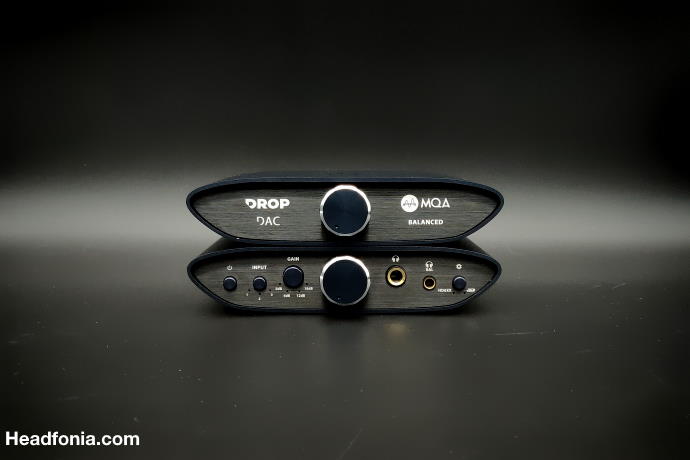
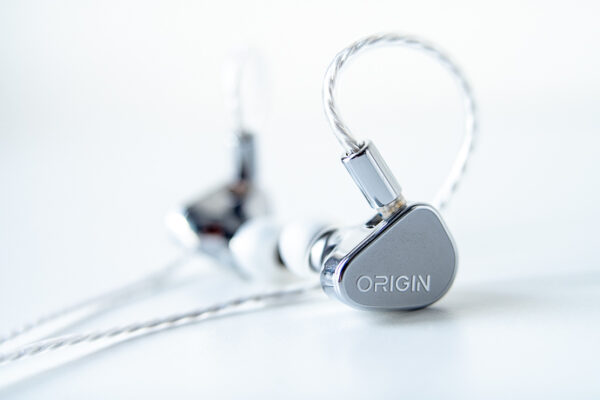
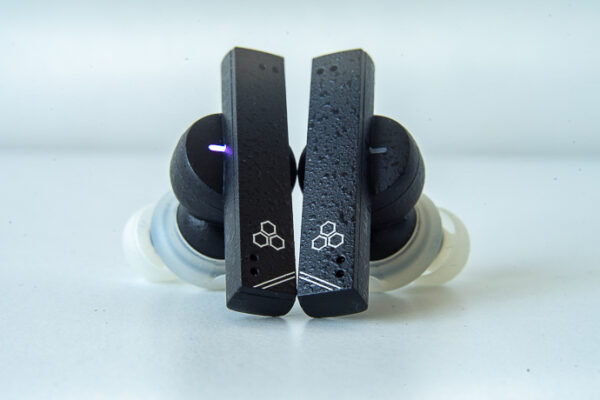
Hiep Le
Does it get hot in summer days?
Dany Braeckman
Did you use the balanced out on the Zen signature dac for review?